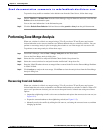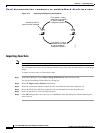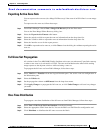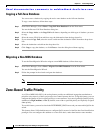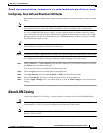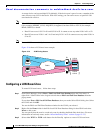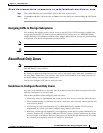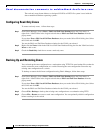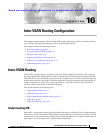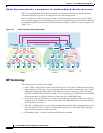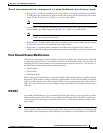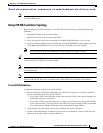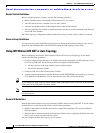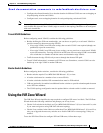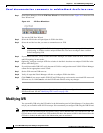
CHAPTER
Send documentation comments to mdsfeedback-doc@cisco.com.
16-1
Cisco MDS 9000 Family Fabric Manager Configuration Guide
OL-6965-03, Cisco MDS SAN-OS Release 2.x
16
Inter-VSAN Routing Configuration
This chapter explains the inter-VSAN routing (IVR) feature and provides details on sharing resources
across VSANs using IVR management interfaces provided in the switch.
This chapter includes the following sections:
• Inter-VSAN Routing, page 16-1
• Using the IVR Zone Wizard, page 16-7
• Modifying IVR, page 16-8
• Enabling IVR Without NAT, page 16-10
• IVR Zones and IVR Zone Sets, page 16-13
• IVR Interoperability, page 16-17
Inter-VSAN Routing
Virtual SANs (VSANs) improve storage area network (SAN) scalability, availability, and security by
allowing multiple Fibre Channel SANs to share a common physical infrastructure of switches and ISLs.
These benefits are derived from the separation of Fibre Channel services in each VSAN and isolation of
traffic between VSANs. Data traffic isolation between the VSANs also inherently prevents sharing of
resources attached to a VSAN, like robotic tape libraries. Using IVR, resources across VSANs are
accessed without compromising other VSAN benefits.
This section includes the following topics:
• Understanding IVR, page 16-1
• IVR Terminology, page 16-2
• Fibre Channel Header Modifications, page 16-3
• IVR NAT, page 16-3
• IVR VSAN Topology, page 16-4
Understanding IVR
Data traffic is transported between specific initiators and targets on different VSANs without merging
VSANs into a single logical fabric. Fibre Channel control traffic does not flow between VSANs, nor can
initiators access any resource across VSANs aside from the designated ones. Valuable resources such as
tape libraries are easily shared across VSANs without compromise.



